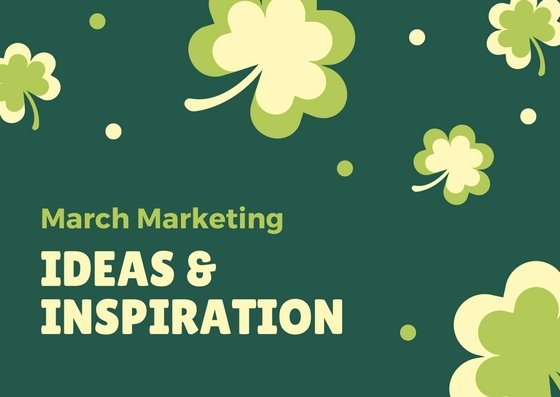In the fast-paced world of marketing, staying ahead requires constant innovation and fresh ideas. If you feel like your marketing strategy has become stagnant or is no longer delivering the desired results, it’s time for a revitalization. This article explores creative and effective marketing ideas to breathe new life into your efforts. Whether you are a startup or an established business, these strategies will help you reconnect with your audience, boost engagement, and drive growth.
Understanding Your Market
Deep Dive into Consumer Behavior
Understanding consumer behavior is critical for crafting an effective marketing strategy. Go beyond basic demographics and delve into the psychological and emotional factors that influence your audience’s purchasing decisions. Use tools like Google Analytics, social media insights, and customer surveys to gather data on how your audience interacts with your brand online.
Look at metrics such as time spent on pages, click-through rates, and conversion paths to identify what drives engagement and purchases. This deeper understanding allows you to tailor your marketing messages to align with your audience’s motivations and preferences.
Conduct Comprehensive Market Research
Comprehensive market research involves both quantitative and qualitative methods to gather a full picture of your market landscape. Start with surveys and questionnaires to collect data on customer preferences, needs, and buying habits.
Follow up with focus groups or in-depth interviews to gain deeper insights into their attitudes and perceptions. Analyze industry reports and case studies to understand broader market trends and dynamics. This thorough research helps you identify opportunities, potential threats, and areas for growth.
Exploring Niche Markets
Identifying and targeting niche markets can differentiate your brand and open new revenue streams. Look for underserved segments within your broader market that have specific needs or preferences. Conduct targeted research to understand their unique characteristics and pain points.
Tailor your products, services, and marketing messages to address these specific needs. For instance, if you are in the fitness industry, you might discover a niche market for senior fitness programs focusing on low-impact exercises and wellness. By catering to niche markets, you can build a loyal customer base and reduce competition.
Utilizing Predictive Analytics
Predictive analytics uses data, statistical algorithms, and machine learning techniques to identify future outcomes based on historical data. Implement predictive analytics to forecast market trends, customer behavior, and sales performance.
This proactive approach allows you to anticipate changes in the market and adjust your strategies accordingly. For example, by analyzing past purchasing patterns, you can predict which products are likely to be in high demand during certain seasons and plan your inventory and marketing campaigns accordingly.
Conducting a SWOT Analysis
A SWOT analysis (Strengths, Weaknesses, Opportunities, Threats) is a strategic planning tool that helps you understand your market position. Evaluate your internal strengths and weaknesses, such as unique product features or limited resources.
Identify external opportunities, such as emerging market trends or gaps in the competition, and threats like new competitors or changing regulations. Use this analysis to develop strategies that leverage your strengths, mitigate your weaknesses, capitalize on opportunities, and defend against threats. A well-conducted SWOT analysis provides a clear roadmap for strategic decision-making.
Mapping the Customer Journey
Mapping the customer journey involves understanding the complete experience customers have with your brand, from initial awareness to post-purchase. Identify the key touchpoints where customers interact with your brand, such as social media, website visits, email communication, and in-store experiences.
Analyze customer behavior at each stage to identify pain points and opportunities for improvement. Use this information to create targeted content and personalized experiences that guide customers smoothly through the buying process. A detailed customer journey map helps you optimize the customer experience and increase satisfaction and loyalty.
Engaging in Social Listening
Social listening involves monitoring social media platforms and online forums to understand what people are saying about your brand, competitors, and industry. Use social listening tools to track mentions, keywords, and trends.
Pay attention to the sentiments and conversations around your brand to identify customer needs, preferences, and emerging trends. Engage with your audience by responding to comments and participating in relevant discussions. Social listening provides real-time insights that can inform your marketing strategies and help you stay ahead of the competition.
Leveraging Competitive Intelligence
Competitive intelligence involves gathering and analyzing information about your competitors to inform your strategic decisions. Monitor their marketing campaigns, product launches, pricing strategies, and customer reviews.
Identify their strengths and weaknesses and compare them with your own. Use this information to identify gaps in the market, refine your value proposition, and develop strategies that give you a competitive edge. Competitive intelligence helps you stay proactive and responsive to market changes.
Building a Data-Driven Culture
Creating a data-driven culture within your organization ensures that decisions are based on insights and evidence rather than intuition. Invest in data analytics tools and train your team to use them effectively. Encourage a mindset that values data collection, analysis, and continuous improvement.
Use data to set measurable goals, track progress, and make informed adjustments to your strategies. A data-driven approach enables you to make more accurate predictions, optimize your marketing efforts, and achieve better results.
Testing and Iterating
The market is constantly evolving, and what works today might not work tomorrow. Adopt a mindset of continuous testing and iteration. Implement A/B testing to compare different marketing strategies, messages, and channels.
Analyze the results to determine what works best and why. Use these insights to refine and optimize your approach. Continuously test new ideas, measure their impact, and iterate based on the findings. This agile approach allows you to adapt to market changes and improve your marketing effectiveness over time.
Enhancing Your Content Marketing

Develop a Content Calendar
A content calendar is essential for organizing and planning your content marketing efforts. It helps ensure consistency and allows you to align your content with key dates and events. Plan out your content topics, formats, and distribution channels for the next few months.
Make sure to include a mix of blog posts, videos, social media updates, and email newsletters. Regularly updating your content keeps your audience engaged and coming back for more.
Focus on Storytelling
Storytelling is a powerful tool in marketing. People connect with stories on an emotional level, making them more likely to remember your brand and message. Share stories that highlight your brand’s values, customer successes, or the journey of your products from concept to market.
Use authentic and relatable narratives to create a deeper connection with your audience. Storytelling not only makes your content more engaging but also builds trust and loyalty.
Leverage User-Generated Content
User-generated content (UGC) is content created by your customers or followers. It can be incredibly effective because it serves as social proof and shows real people benefiting from your products or services.
Encourage your audience to share their experiences on social media using a branded hashtag. Feature their posts on your website, social media channels, and marketing materials. UGC not only provides fresh content but also fosters a sense of community and loyalty among your customers.
Invest in Visual Content
Visual content, such as images, videos, and infographics, is more engaging and easier to consume than text alone. Invest in high-quality visual content that showcases your products, tells your brand story, or educates your audience. Short videos, tutorials, and live streams can capture attention and drive engagement. Visual content is also more likely to be shared, increasing your reach and visibility.
Leveraging Social Media Platforms
Developing a Comprehensive Social Media Strategy
Creating a comprehensive social media strategy involves setting clear goals, identifying your target audience, and planning your content. Begin by defining what you want to achieve with your social media efforts, such as increasing brand awareness, driving website traffic, or generating leads.
Next, identify which social media platforms your target audience uses most frequently and tailor your content to fit each platform’s unique features and audience behaviors. Develop a content calendar to ensure consistency and organization, planning posts around key dates, product launches, and promotional campaigns.
Creating Platform-Specific Content
Each social media platform has its strengths and audience preferences. Customize your content to leverage these differences effectively. For example, Instagram is ideal for high-quality visual content like photos and short videos, making it perfect for showcasing products and behind-the-scenes glimpses of your brand.
LinkedIn is more suited for professional and educational content, such as industry insights, thought leadership articles, and company updates. Twitter works well for real-time updates, customer service interactions, and sharing quick tips or news. By tailoring your content to each platform, you can maximize engagement and reach.
Utilizing Stories and Reels
Short-form content like Stories and Reels on Instagram and Facebook can significantly boost engagement. These formats are ideal for sharing quick, digestible content that feels personal and immediate.
Use Stories to share behind-the-scenes moments, quick tips, or to promote time-sensitive offers. Reels can be used to showcase products in action, share tutorials, or highlight user-generated content. Both formats allow for creative expression and can be used to drive traffic to your main profile or website.
Engaging with Your Audience
Engagement is crucial for building a loyal following on social media. Respond promptly to comments, messages, and mentions to show that you value your audience’s input and are attentive to their needs.
Encourage interaction by asking questions, running polls, and starting conversations around topics relevant to your brand. Hosting live sessions, such as Q&A or product demonstrations, can also foster real-time engagement and build a stronger connection with your audience.
Running Social Media Contests
Contests and giveaways are effective ways to boost engagement and attract new followers. Design contests that require participants to interact with your brand, such as sharing a post, tagging friends, or submitting user-generated content.
Offer appealing prizes that resonate with your audience and promote the contest across all your social media channels. Contests not only increase engagement but also expand your reach as participants share your content with their networks.
Leveraging Influencer Collaborations
Influencer collaborations can amplify your reach and credibility. Identify influencers who align with your brand values and have a following that matches your target audience. Collaborate with them to create authentic content that highlights your products or services.
Influencers can provide fresh perspectives and introduce your brand to new audiences. Ensure that the collaboration feels genuine and that the influencer’s endorsement is sincere to maintain authenticity and trust.
Utilizing Social Media Advertising
Social media advertising offers precise targeting options that can help you reach your ideal audience. Use platforms like Facebook Ads, Instagram Ads, and LinkedIn Ads to create targeted campaigns based on demographics, interests, and behaviors.
Experiment with different ad formats, such as carousel ads, video ads, and sponsored posts, to see what resonates best with your audience. Monitor the performance of your ads and adjust your strategies based on the data to maximize your return on investment.
Implementing Social Listening
Social listening involves monitoring social media channels for mentions of your brand, competitors, and industry-related keywords. Use social listening tools to track conversations and gather insights into what people are saying about your brand.
This can help you identify trends, gauge public sentiment, and respond to feedback in real-time. Engaging in social listening allows you to be proactive in addressing concerns, seizing opportunities, and staying ahead of the competition.
Building a Community
Building a community around your brand fosters loyalty and encourages long-term engagement. Create groups or forums where your audience can connect, share experiences, and discuss topics related to your brand.
Engage with your community regularly by sharing valuable content, hosting events, and recognizing active members. A strong community can provide valuable insights, generate user-generated content, and create a sense of belonging among your followers.
Analyzing and Adapting Your Strategy
Regularly analyzing your social media performance is essential for continuous improvement. Use analytics tools provided by each platform to track key metrics such as engagement rates, reach, and conversion rates.
Identify which types of content perform best and at what times your audience is most active. Use these insights to refine your social media strategy and make data-driven decisions. Continuously test new ideas, measure their impact, and adapt your approach to keep your social media efforts fresh and effective.
Enhancing Customer Engagement
Build an Interactive Website
Your website is often the first impression potential customers have of your brand. Make it interactive and user-friendly to keep visitors engaged. Incorporate features like live chat for instant customer support, interactive product demos, and personalized content recommendations.
Ensure that your website is mobile-responsive and loads quickly to provide a seamless experience across all devices. Regularly update your site with fresh content to encourage repeat visits.
Implement Email Marketing Automation
Email marketing remains one of the most effective ways to nurture leads and maintain customer relationships. Use email marketing automation to send personalized messages based on customer behavior and preferences.
For example, set up automated welcome emails for new subscribers, follow-up emails after a purchase, and re-engagement emails for inactive customers. Segment your email list to send targeted content that resonates with different audience segments. Personalized and timely emails can significantly improve open rates, click-through rates, and conversions.

Create a Loyalty Program
A well-designed loyalty program can encourage repeat business and increase customer retention. Offer rewards for purchases, referrals, and social media engagement. Provide exclusive perks such as early access to new products, special discounts, or personalized recommendations.
Promote your loyalty program through your website, email campaigns, and social media channels. A loyalty program not only incentivizes repeat purchases but also fosters a sense of belonging and appreciation among your customers.
Host Webinars and Virtual Events
Webinars and virtual events are excellent ways to engage with your audience and provide valuable content. Host webinars on topics relevant to your industry, such as expert panels, product demonstrations, or educational sessions.
Promote these events through your marketing channels and encourage participants to ask questions and interact with the presenters. Virtual events can position your brand as a thought leader and provide opportunities for real-time engagement with your audience.
Encourage Reviews and Testimonials
Positive reviews and testimonials can build trust and credibility for your brand. Encourage satisfied customers to leave reviews on platforms like Google, Yelp, and social media. Feature these reviews prominently on your website and marketing materials.
Respond to reviews, both positive and negative, to show that you value customer feedback and are committed to continuous improvement. Genuine testimonials can reassure potential customers and influence their purchasing decisions.
Exploring Innovative Advertising Techniques
Utilize Programmatic Advertising
Programmatic advertising uses automated technology to buy and place ads based on data insights and algorithms. This method allows for highly targeted and efficient ad placements.
Use programmatic advertising to reach your ideal audience across various digital channels, including display ads, video ads, and social media. Monitor the performance of your campaigns and adjust them in real-time to maximize ROI.
Experiment with Augmented Reality (AR) Ads
Augmented reality (AR) ads provide an immersive and interactive experience for users. Incorporate AR into your marketing strategy by creating ads that allow customers to visualize your products in their environment.
For example, a furniture retailer could use AR ads to let customers see how a piece of furniture would look in their home. AR ads can enhance the customer experience and make your brand stand out in a crowded marketplace.
Leverage Geotargeting
Geotargeting allows you to deliver personalized ads based on a user’s location. Use geotargeting to reach potential customers near your physical store or in specific regions where your products or services are popular.
Tailor your ad messages to reflect local events, weather conditions, or regional preferences. Geotargeting can increase the relevance and effectiveness of your ads, driving more foot traffic and local sales.
Invest in Video Marketing
Video marketing is a powerful tool for capturing attention and conveying your message. Create engaging video content that showcases your products, tells your brand story, or provides valuable information.
Use platforms like YouTube, Instagram, and Facebook to distribute your videos and reach a broader audience. Experiment with different formats, such as live videos, tutorials, behind-the-scenes footage, and customer testimonials. High-quality video content can boost engagement and drive conversions.
Implement Native Advertising
Native advertising seamlessly integrates promotional content with the platform’s editorial content, making it less intrusive and more engaging. Use native ads to reach your audience on social media platforms, news websites, and content discovery networks.
Ensure that your native ads are relevant and provide value to the audience. Native advertising can increase brand awareness and drive higher engagement rates compared to traditional display ads.
Strengthening Your Brand Identity
Crafting a Compelling Brand Story
A compelling brand story is essential for creating a strong identity. Your brand story should communicate who you are, what you stand for, and why you do what you do. It should resonate with your audience on an emotional level and differentiate you from competitors.
Start by identifying the core values and mission of your brand. Then, weave these elements into a narrative that highlights your journey, challenges, and successes. Share your brand story consistently across all marketing channels to build a cohesive and memorable brand identity.
Consistency in Visual Identity
Consistency in visual identity helps build recognition and trust. Ensure that all visual elements of your brand, including your logo, color scheme, typography, and imagery, are consistent across all platforms and materials.
Develop brand guidelines that outline these elements and provide clear instructions for their use. Regularly review your visual identity to ensure it remains aligned with your brand values and resonates with your audience. Consistency in visuals reinforces your brand’s presence and makes it easily recognizable.
Voice and Tone
Your brand’s voice and tone play a crucial role in how your audience perceives you. Define a clear and distinctive voice that reflects your brand’s personality. Whether your tone is professional, friendly, humorous, or authoritative, it should be consistent across all communications.
Develop a style guide that outlines your voice and tone, providing examples and guidelines for various scenarios. Consistent voice and tone help build a strong, cohesive brand identity and foster a deeper connection with your audience.
Engaging Brand Experiences
Creating engaging brand experiences can leave a lasting impression on your audience. Think beyond traditional marketing and explore ways to provide memorable interactions. This could include hosting events, creating immersive online experiences, or offering exceptional customer service.
Engage your audience through interactive content, personalized experiences, and unique touchpoints. By providing engaging brand experiences, you can build strong emotional connections and foster brand loyalty.
Customer-Centric Branding
Putting your customers at the center of your branding efforts ensures that your brand remains relevant and resonates with your audience. Gather insights from customer feedback, reviews, and social listening to understand their needs, preferences, and pain points.
Use this information to tailor your branding and messaging to address their specific concerns and desires. Show empathy and understanding in your communications, demonstrating that you value your customers and are committed to meeting their needs.
Leveraging Brand Ambassadors

Brand ambassadors can amplify your brand’s reach and credibility. Identify loyal customers, employees, or influencers who genuinely believe in your brand and are willing to promote it. Provide them with the tools and resources they need to share their positive experiences and advocate for your brand.
Recognize and reward their efforts to maintain their enthusiasm and commitment. Brand ambassadors can help spread your brand message authentically and attract new customers through word-of-mouth recommendations.
Evolving Your Brand
While consistency is key, it’s also important to evolve your brand over time to stay relevant. Regularly assess your brand’s performance and make adjustments based on market trends, customer feedback, and business goals.
This could involve refreshing your visual identity, updating your brand messaging, or introducing new products and services. Evolving your brand shows that you are dynamic and responsive to changes, which can attract new customers and retain existing ones.
Building Emotional Connections
Building emotional connections with your audience can significantly enhance brand loyalty. Use storytelling, visuals, and experiences that evoke emotions and create a sense of belonging. Highlight the human side of your brand by sharing stories of your team, customers, and community involvement.
Show genuine care and appreciation for your customers through personalized communications and thoughtful gestures. Emotional connections make your brand more relatable and memorable, encouraging customers to stay loyal and advocate for you.
Integrating Social Responsibility
Integrating social responsibility into your brand can strengthen your identity and appeal to socially conscious consumers. Identify causes that align with your brand values and actively support them through donations, volunteer work, or sustainable business practices.
Communicate your social responsibility efforts transparently and authentically. Show your audience how their support of your brand contributes to positive social or environmental impact. Social responsibility can enhance your brand’s reputation and differentiate you from competitors.
Measuring Brand Health
Regularly measuring and analyzing your brand’s health is essential for maintaining a strong identity. Use metrics such as brand awareness, perception, loyalty, and engagement to assess your brand’s performance.
Conduct surveys, focus groups, and social listening to gather qualitative insights. Analyze this data to identify strengths, weaknesses, and opportunities for improvement. Use these insights to refine your branding strategies and ensure that your brand remains strong and relevant.
Conclusion
Revitalizing your marketing strategy involves a multifaceted approach that starts with understanding your market, leveraging social media platforms effectively, and strengthening your brand identity. By diving deep into consumer behavior, reassessing your target audience, and continuously analyzing competitor strategies, you can ensure that your marketing efforts are aligned with current trends and audience needs.
Incorporating fresh content ideas, engaging storytelling, and interactive social media campaigns can breathe new life into your marketing approach. Customizing your content for each platform, utilizing influencer collaborations, and employing innovative advertising techniques like AR and geotargeting can significantly boost your brand’s visibility and engagement.
Read Next:
- Holiday Marketing Strategies to Boost Sales and Engagement
- Proven Marketing Strategies for Insurance Agencies
- Community Outreach Marketing Ideas for Apartment Complexes
- Effective Marketing Strategies to Grow Your Dental Practice
- Powerful Marketing Strategies for Real Estate Agents






















Comments are closed.